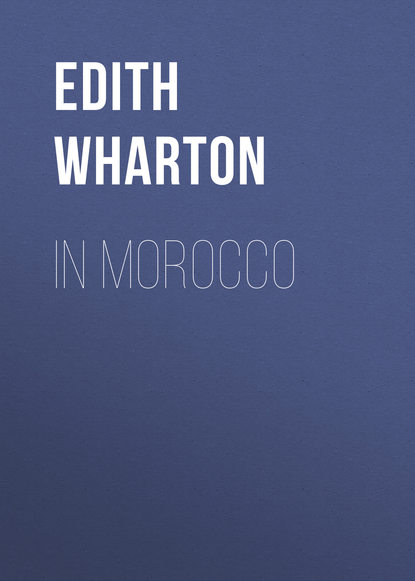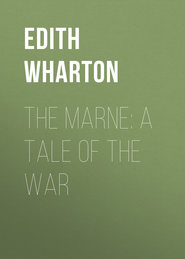По всем вопросам обращайтесь на: info@litportal.ru
(©) 2003-2024.
✖
In Morocco
Настройки чтения
Размер шрифта
Высота строк
Поля
A quay 100 metres long on the Salé side of the river.
Kenitra. The port of Kenitra is at the mouth of the Sebou River, and is capable of becoming a good river port.
The work up to December, 1917, comprises:
A channel 100 metres long and three metres deep, cut through the bar of the Sebou.
Jetties built on each side of the channel.
Quay 100 metres long.
Building of sheds, depots, warehouses, steam-cranes, etc.
At the ports of Fedalah, Mazagan, Safi, Mogador and Agadir similar plans are in course of execution.
COMMERCE
COMPARATIVE TABLES
ROADS BUILT
RAILWAYS BUILT
LAND CULTIVATED
JUSTICE
1. Creation of French courts for French nationals and those under French protection. These take cognizance of civil cases where both parties, or even one, are amenable to French jurisdiction.
2. Moroccan law is Moslem, and administered by Moslem magistrates. Private law, including that of inheritance, is based on the Koran. The Sultan has maintained the principle whereby real property and administrative cases fall under native law. These courts are as far as possible supervised and controlled by the establishment of a Cherifian Ministry of Justice to which the native Judges are responsible. Special care is taken to prevent the alienation of property held collectively, or any similar transactions likely to produce political and economic disturbances.
3. Criminal jurisdiction is delegated to Pashas and Cadis by the Sultan, except of offenses committed against, or in conjunction with, French nationals and those under French protection. Such cases come before the tribunals of the French Protectorate.
EDUCATION
The object of the Protectorate has been, on the one hand, to give to the children of French colonists in Morocco the same education as they would have received at elementary and secondary schools in France; on the other, to provide the indigenous population with a system of education that shall give to the young Moroccans an adequate commercial or manual training, or prepare them for administrative posts, but without interfering with their native customs or beliefs.
Before 1912 there existed in Morocco only a few small schools supported by the French Legation at Tangier and by the Alliance Française, and a group of Hebrew schools in the Mellahs, maintained by the Universal Israelite Alliance.
In addition to the French and indigenous schools, sewing-schools have been formed for the native girls and have been exceptionally successful.
Moslem colleges have been founded at Rabat and Fez in order to supplement the native education of young Mahometans of the upper classes, who intend to take up wholesale business or banking, or prepare for political, judicial or administrative posts under the Sultan's government. The course lasts four years and comprises: Arabic, French, mathematics, history, geography, religious (Mahometan) instruction, and the law of the Koran.
The "Ecole Supérieure de la langue arabe et des dialectes berbères" at Rabat receives European and Moroccan students. The courses are: Arabic, the Berber dialects, Arab literature, ethnography, administrative Moroccan law, Moslem law, Berber customary law.
MEDICAL AID
The Protectorate has established 113 medical centres for the native population, ranging from simple dispensaries and small native infirmaries to the important hospitals of Rabat, Fez, Meknez, Marrakech, and Casablanca.
Mobile sanitary formations supplied with light motor ambulances travel about the country, vaccinating, making tours of sanitary inspection, investigating infected areas, and giving general hygienic education throughout the remoter regions.
Night-shelters in towns. Every town is provided with a shelter for the indigent wayfarers so numerous in Morocco. These shelters are used as disinfection centres, from which suspicious cases are sent to quarantine camp at the gates of the towns.
Central Laboratory at Rabat. This is a kind of Pasteur Institute. In 1917, 210,000 persons were vaccinated throughout the country and 356 patients treated at the Laboratory for rabies.
Clinics for venereal diseases have been established at Casablanca, Fez, Rabat, and Marrakech.
More than 15,000 cases were treated in 1917.
Ophthalmic clinics in the same cities gave in 1917, 44,600 consultations.
Radiotherapy. Clinics have been opened at Fez and Rabat for the treatment of skin diseases of the head, from which the native children habitually suffer.
The French Department of Health distributes annually immense quantities of quinine in the malarial districts.
Madame Lyautey's private charities comprise admirably administered child-welfare centres in the principal cities, with dispensaries for the native mothers and children.
VII
A SKETCH OF MOROCCAN HISTORY
Note.—In the chapters on Moroccan history and art I have tried to set down a slight and superficial outline of a large and confused subject. In extenuation of this summary attempt I hasten to explain that its chief merit is its lack of originality.
Its facts are chiefly drawn from the books mentioned in the short bibliography at the end of the volume; in addition to which I am deeply indebted for information given on the spot to the group of remarkable specialists attached to the French administration, and to the cultivated and cordial French officials, military and civilian, who, at each stage of my rapid journey, did their best to answer my questions and open my eyes.
I
THE BERBERS
In the briefest survey of the Moroccan past account must first of all be taken of the factor which, from the beginning of recorded events, has conditioned the whole history of North Africa: the existence, from the Sahara to the Mediterranean, of a mysterious irreducible indigenous race with which every successive foreign rule, from Carthage to France, has had to reckon, and which has but imperfectly and partially assimilated the language, the religion, and the culture that successive civilizations have tried to impose upon it.
This race, the race of Berbers, has never, modern explorers tell us, become really Islamite, any more than it ever really became Phenician, Roman or Vandal. It has imposed its habits while it appeared to adopt those of its invaders, and has perpetually represented, outside the Ismalitic and Hispano-Arabic circle of the Makhzen, the vast tormenting element of the dissident, the rebellious, the unsubdued tribes of the Blad-es-Siba.
Who were these indigenous tribes with whom the Phenicians, when they founded their first counting-houses on the north and west coast of Africa, exchanged stuffs and pottery and arms for ivory, ostrich-feathers and slaves?
Historians frankly say they do not know. All sorts of material obstacles have hitherto hampered the study of Berber origins; but it seems clear that from the earliest historic times they were a mixed race, and the ethnologist who attempts to define them is faced by the same problem as the historian of modern America who should try to find the racial definition of an "American." For centuries, for ages, North Africa has been what America now is: the clearing-house of the world. When at length it occurred to the explorer that the natives of North Africa were not all Arabs or Moors, he was bewildered by the many vistas of all they were or might be: so many and tangled were the threads leading up to them, so interwoven was their pre-Islamite culture with worn-out shreds of older and richer societies.
M. Saladin, in his "Manuel d'Architecture Musulmane," after attempting to unravel the influences which went to the making of the mosque of Kairouan, the walls of Marrakech, the Medersas of Fez—influences that lead him back to Chaldæan branch-huts, to the walls of Babylon and the embroideries of Coptic Egypt—somewhat despairingly sums up the result: "The principal elements contributed to Moslem art by the styles preceding it may be thus enumerated: from India, floral ornament; from Persia, the structural principles of the Acheminedes, and the Sassanian vault. Mesopotamia contributes a system of vaulting, incised ornament, and proportion; the Copts, ornamental detail in general; Egypt, mass and unbroken wall-spaces; Spain, construction and Romano-Iberian ornament; Africa, decorative detail and Romano-Berber traditions (with Byzantine influences in Persia); Asia Minor, a mixture of Byzantine and Persian characteristics."
As with the art of North Africa, so with its supposedly indigenous population. The Berber dialects extend from the Lybian desert to Senegal. Their language was probably related to Coptic, itself related to the ancient Egyptian and the non-Semitic dialects of Abyssinia and Nubia. Yet philologists have discovered what appears to be a far-off link between the Berber and Semitic languages, and the Chleuhs of the Draa and the Souss, with their tall slim Egyptian-looking bodies and hooked noses, may have a strain of Semitic blood. M. Augustin Bernard, in speaking of the natives of North Africa, ends, much on the same note as M. Saladin in speaking of Moslem art: "In their blood are the sediments of many races, Phenician, Punic, Egyptian and Arab."
They were not, like the Arabs, wholly nomadic; but the tent, the flock, the tribe always entered into their conception of life. M. Augustin Bernard has pointed out that, in North Africa, the sedentary and nomadic habit do not imply a permanent difference, but rather a temporary one of situation and opportunity. The sedentary Berbers are nomadic in certain conditions; and from the earliest times the invading nomad Berbers tended to become sedentary when they reached the rich plains north of the Atlas. But when they built cities it was as their ancestors and their neighbours pitched tents; and they destroyed or abandoned them as lightly as their desert forbears packed their camel-bags and moved to new pastures. Everywhere behind the bristling walls and rock-clamped towers of old Morocco lurks the shadowy spirit of instability. Every new Sultan builds himself a new house and lets his predecessors' palaces fall into decay; and as with the Sultan so with his vassals and officials. Change is the rule in this apparently unchanged civilization, where "nought may abide but Mutability."
II
PHENICIANS, ROMANS AND VANDALS
Far to the south of the Anti-Atlas, in the yellow deserts that lead to Timbuctoo, live the wild Touaregs, the Veiled Men of the south, who ride to war with their faces covered by linen masks.










